

In today’s dynamic business environment, entering new markets or launching products comes with unprecedented complexity. Organizations must adapt quickly to thrive and outperform their rivals as the market landscape shifts in 2025.
A robust go to market strategy mckinsey is essential for sustainable growth and a lasting competitive edge. Drawing from McKinsey’s proven frameworks and real-world successes, this guide delivers actionable steps and the latest insights for GTM planning.
You will discover core pillars, execution tactics, case examples, and clear metrics to measure success. Start applying these principles now to transform your go to market strategy mckinsey and drive results in the year ahead.
Understanding the McKinsey GTM Strategy Framework
In the current business landscape, a robust go to market strategy mckinsey approach is more critical than ever. As organizations prepare for 2025, aligning strategy with market realities and customer needs can make or break success. Let's explore how McKinsey’s framework provides a structured path to outperform the competition.
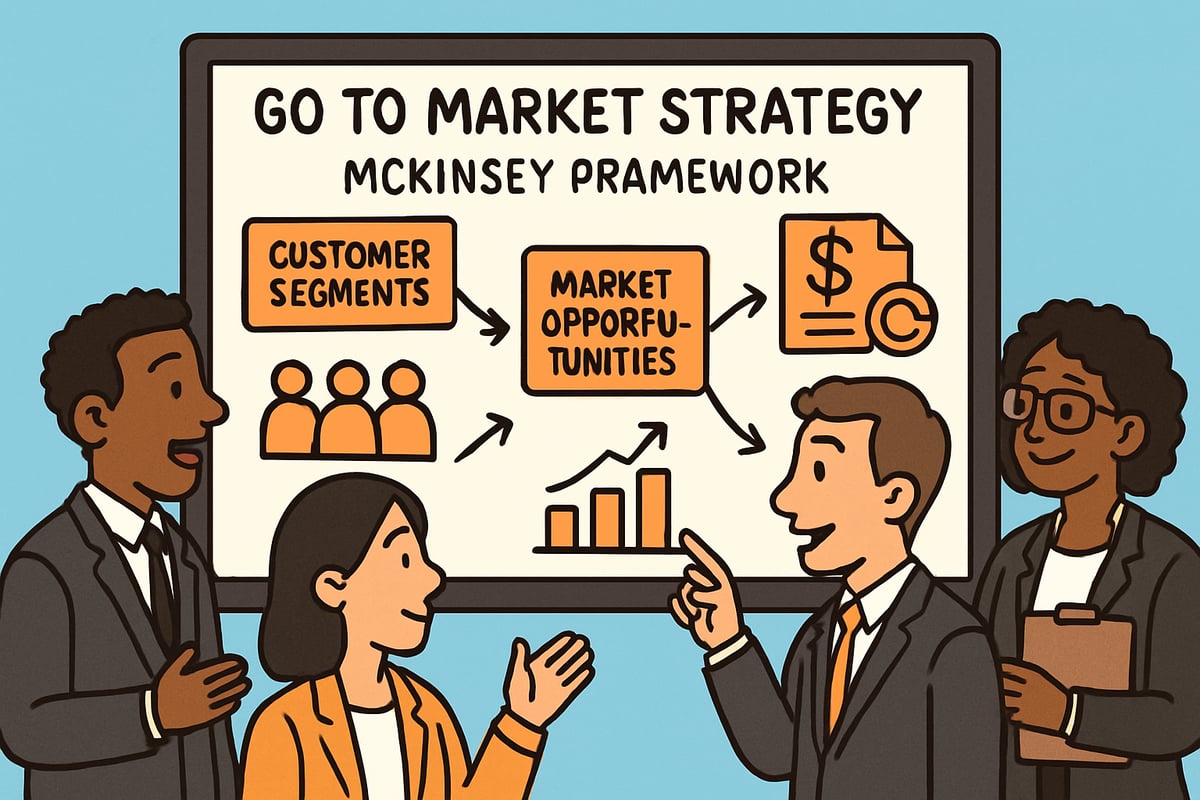
The Evolution and Importance of GTM Strategy
A go to market strategy mckinsey perspective starts with understanding GTM as the blueprint for how a business brings products or services to market, engages customers, and drives revenue. Unlike broad business strategy, a GTM strategy zeroes in on customer acquisition, market entry, and growth pathways.
McKinsey emphasizes the importance of aligning GTM initiatives with organizational goals. Data shows companies with documented GTM strategies are 33 percent more likely to achieve revenue targets. As markets grow more complex in 2025, structured GTM strategies help businesses navigate shifting customer expectations and competitive threats.
The cost of failed product launches is high. Without a robust go to market strategy mckinsey framework, organizations risk wasted resources, missed opportunities, and reputational damage.
Core Pillars of McKinsey’s Framework
The go to market strategy mckinsey framework is built on six core pillars:
These pillars work together to guide organizations from market analysis to execution and continuous improvement. Each stage requires data-driven decision making and cross-functional collaboration.
For a detailed breakdown of these pillars and how they interconnect, see McKinsey's Go-to-Market Strategy Framework.
McKinsey’s “Seven Growth Directions” Explained
A modern go to market strategy mckinsey recommends incorporates seven growth directions:
Growth DirectionFocus AreaProduct InnovationContinuous improvementMarket PenetrationDeepening reach in current marketsNew Market EntryExpanding into new segmentsDigital MarketingIntegrating digital and contentPricing StrategiesCompetitive and value-based pricingBrand PositioningMessaging for differentiationOperational ExcellenceScalable execution
By leveraging these growth directions, organizations can diversify their approach, adapt to market shifts, and sustain long-term growth.
The Role of Data, Technology, and Cross-Functional Alignment
Success with a go to market strategy mckinsey model depends on harnessing data and technology. Data-driven insights inform market sizing, customer segmentation, and channel selection. Advanced analytics and digital tools streamline execution and enable real-time adjustments.
Cross-functional alignment is essential. Sales, marketing, and product teams must work together with shared objectives. IBM’s hybrid GTM model, which blends direct sales with digital channels, is a prime example of how coordinated teams can drive deeper market penetration and customer engagement.
Common Pitfalls and How McKinsey Avoids Them
A go to market strategy mckinsey approach helps organizations steer clear of common pitfalls such as:
To avoid these issues, McKinsey advocates for regular assessment, structured feedback loops, and agile iteration. By measuring performance and remaining adaptable, companies can refine their strategy and sustain their competitive edge.
Step-by-Step Guide: Building a McKinsey-Style GTM Strategy for 2025
Building a robust go to market strategy mckinsey style requires a disciplined, sequential approach. Each step lays the foundation for the next, ensuring your GTM plan is data-driven, customer-centric, and agile. Here is a comprehensive, actionable guide to designing a GTM strategy fit for 2025.
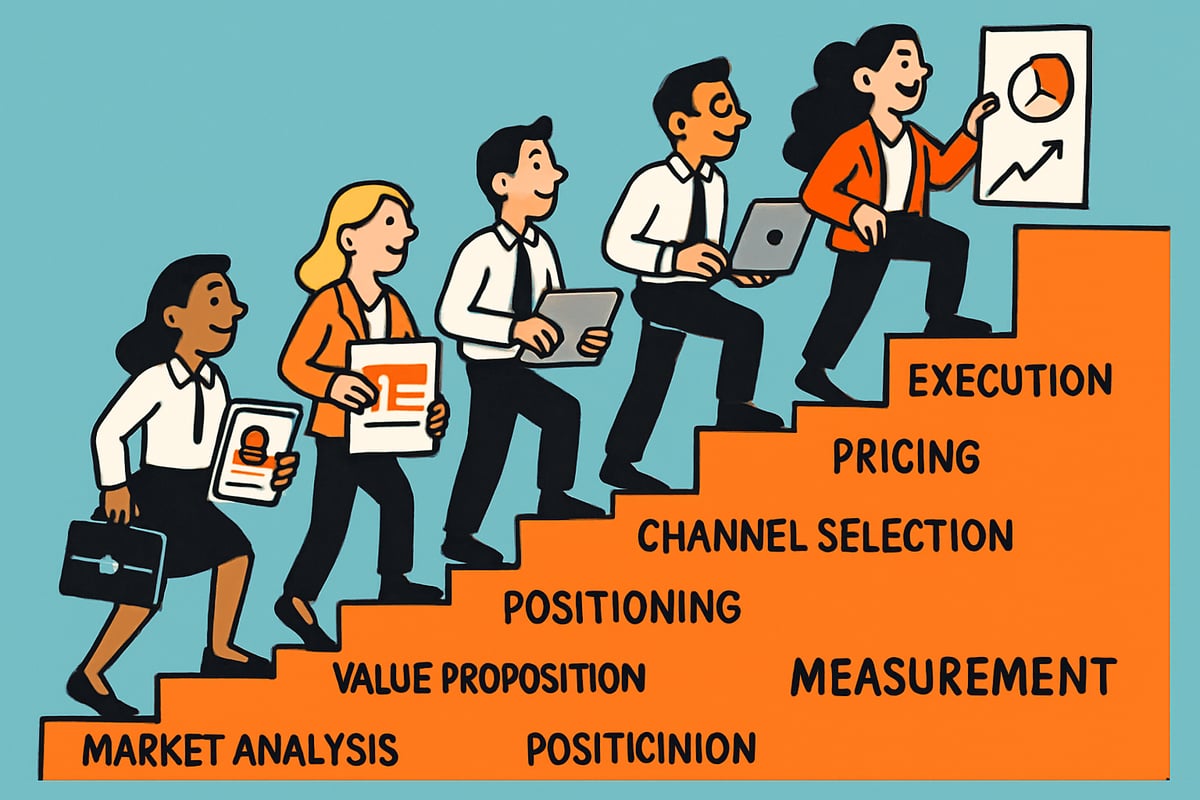
Step 1: Market and Customer Analysis
Start your go to market strategy mckinsey journey with deep market and customer analysis. Gather both primary and secondary data to map industry trends, growth projections, and the competitive landscape.
Segment your target customers using personas. Use interviews, surveys, and social listening to gain qualitative and quantitative insights. Behavioral analysis helps identify unmet needs and buying triggers.
For example, McKinsey’s approach to customer segmentation in consumer goods tailors marketing and sales efforts to specific demographics, resulting in higher engagement and conversion rates.
A precise understanding of your market ensures your GTM moves are targeted and relevant.
Step 2: Crafting a Compelling Value Proposition
A strong go to market strategy mckinsey framework centers on a differentiated value proposition. Define what makes your product unique and how it delivers tangible outcomes for customers.
Articulate key benefits using a strategic narrative that resonates with each segment. Focus on customer needs, not just features. Test messaging through A/B campaigns and customer interviews.
McKinsey’s focus on value-based messaging has helped companies like Armour & Company highlight operational excellence, supporting strong market adoption.
A compelling value proposition is the anchor for all positioning and sales efforts.
Step 3: Product Positioning and Messaging
Positioning is the heart of your go to market strategy mckinsey methodology. Define how your product solves specific customer pain points, and craft messaging that speaks directly to buyer personas.
Develop messaging frameworks that align with your brand values and market expectations. Use competitor analysis to identify gaps and highlight what sets your solution apart.
General Motors, for instance, uses segmentation to position cars for diverse audiences, ensuring each segment receives tailored messaging that drives engagement.
Effective positioning ensures your product stands out in a crowded marketplace.
Step 4: Channel and Sales Model Selection
Choosing the right channels is vital for a go to market strategy mckinsey playbook. Evaluate direct sales, partnerships, and digital platforms in the context of your target customer’s buying journey.
Consider hybrid models for broader reach and greater flexibility. Assess each channel for scalability, resource requirements, and alignment with customer preferences.
IBM’s multi-channel approach in IT solutions, blending direct sales with value-added resellers, provides a blueprint for maximizing coverage and efficiency.
A strategic channel mix ensures you meet customers where they are.
Step 5: Pricing and Revenue Model Optimization
Pricing is a powerful lever in any go to market strategy mckinsey approach. Begin with a thorough analysis of competitive pricing and customer willingness to pay.
Choose between cost-plus, competitive, or value-based pricing models. Consider different revenue streams, such as subscriptions or usage-based fees. Use data to model the impact of pricing on both market share and perception.
Pricing ModelProsConsCost-plusSimple, covers costsIgnores value perceptionCompetitiveMarket-alignedCan trigger price warsValue-basedMaximizes profitRequires deep insight
McKinsey’s emphasis on value-based pricing ensures alignment with customer expectations and business goals.
Step 6: Execution Planning and Enablement
Execution bridges strategy and results in a go to market strategy mckinsey framework. Define clear objectives, key results (OKRs), and milestones for each team.
Assign responsibilities and establish timelines across functions. Create sales enablement tools, training programs, and support resources. Embrace agile project management to adapt quickly to changes.
McKinsey’s structured action plans for B2B launches consistently deliver on-time, on-budget execution.
Meticulous planning ensures everyone is aligned and empowered to deliver.
Step 7: Measurement, Feedback, and Iteration
Continuous improvement is central to any go to market strategy mckinsey model. Establish KPIs for acquisition, retention, and revenue growth. Implement feedback loops from both customers and sales teams.
Schedule regular reviews to assess GTM effectiveness and make data-driven adjustments. Companies that review their GTM quarterly outperform those with static plans. For deeper insights into avoiding common GTM missteps, see Why Go-To-Market Strategies Fail.
Ongoing measurement and iteration are key to maintaining a winning edge in 2025.
Key Components of a Successful GTM Execution (McKinsey Insights)
Executing a top-tier go to market strategy mckinsey requires a blend of data-driven precision, cross-functional alignment, and continuous feedback. Each core component contributes to building a resilient framework that drives growth and market impact. Below, we break down the essential elements for GTM success, drawing on McKinsey’s proven methodologies.
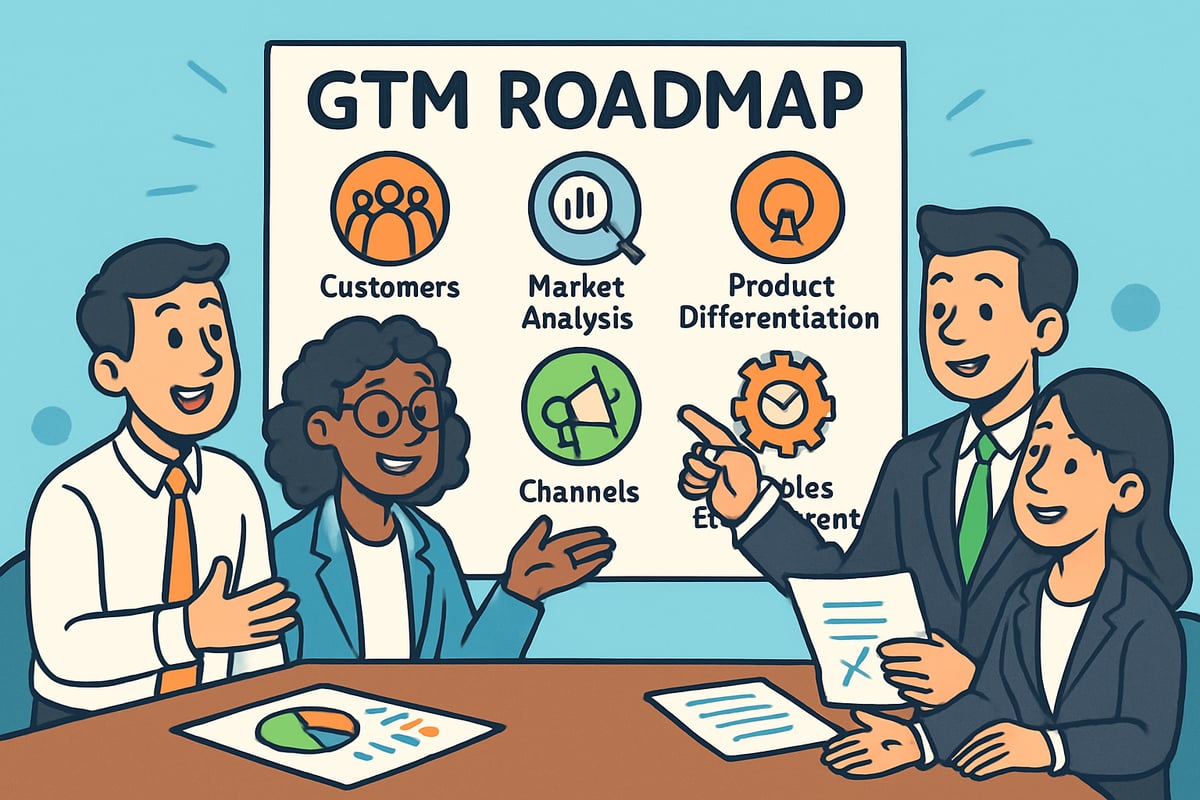
Target Customer Identification and Persona Development
The foundation of any go to market strategy mckinsey lies in accurately identifying and understanding your target customers. Start with comprehensive research to uncover demographics, psychographics, and buying behaviors.
Develop detailed buyer personas that represent both decision-makers and end users. For B2B SaaS, this means mapping out use cases, pain points, and motivations for each segment. For example, DevSquad’s dual persona approach distinguishes between technical buyers and business stakeholders, aligning messaging for both.
Use these insights to:
Aligning marketing and sales around shared personas streamlines execution and maximizes impact.
Market Demand and Competitive Analysis
A robust go to market strategy mckinsey always incorporates in-depth market demand and competitive analysis. Begin by conducting a SWOT analysis to understand where your strengths and opportunities lie, and where threats or weaknesses may undermine efforts.
Benchmark competitor GTM tactics and performance to identify white space in the market. Use frameworks such as TAM, SAM, and SOM to quantify potential and focus resources. Companies that regularly assess their competitive landscape consistently outperform peers in new market entry and growth.
Examples from consumer goods reveal that leveraging local market insights can uncover unmet needs and refine positioning. This analysis ensures your GTM approach is both proactive and adaptive.
Value Proposition and Product Differentiation
Refining your value proposition is central to a successful go to market strategy mckinsey. It starts with listening to customer feedback and identifying market gaps. Emphasize what sets your solution apart, whether it is unique features, superior outcomes, or customer experience.
Develop clear proof points and case studies to build credibility. McKinsey’s playbook recommends continuous validation of your differentiation through real-world results.
Key steps include:
A strong value proposition accelerates adoption and builds lasting advantage.
Channel Strategy and Partnership Development
Selecting the right distribution channels is pivotal in the go to market strategy mckinsey framework. Evaluate direct sales, digital channels, and strategic alliances to maximize reach and efficiency.
Build partnerships that complement your strengths, such as IBM’s use of value-added resellers and hybrid models. Regularly assess channel performance and be ready to pivot as customer preferences evolve. For more on optimizing sales channels and partnerships, review McKinsey's Go-to-Market Optimization Solutions.
A flexible channel approach ensures scalability and supports rapid market shifts.
Sales Enablement and Team Alignment
Sales enablement is the engine of a high-performing go to market strategy mckinsey. Equip your sales teams with up-to-date tools, training, and playbooks that reflect the latest market intelligence.
Foster tight alignment between marketing, sales, and product teams by scheduling regular enablement sessions and feedback loops. McKinsey’s structured approach to team alignment ensures that everyone is moving toward the same goals.
Key practices include:
When teams are unified and well-equipped, GTM execution becomes more agile and effective.
Pricing, Positioning, and Messaging: The McKinsey Approach
A robust go to market strategy mckinsey is built on a foundation of disciplined pricing, precise positioning, and powerful messaging. These three pillars shape how your offering is perceived, purchased, and recommended. McKinsey’s approach emphasizes data-driven decisions and alignment across all customer touchpoints.
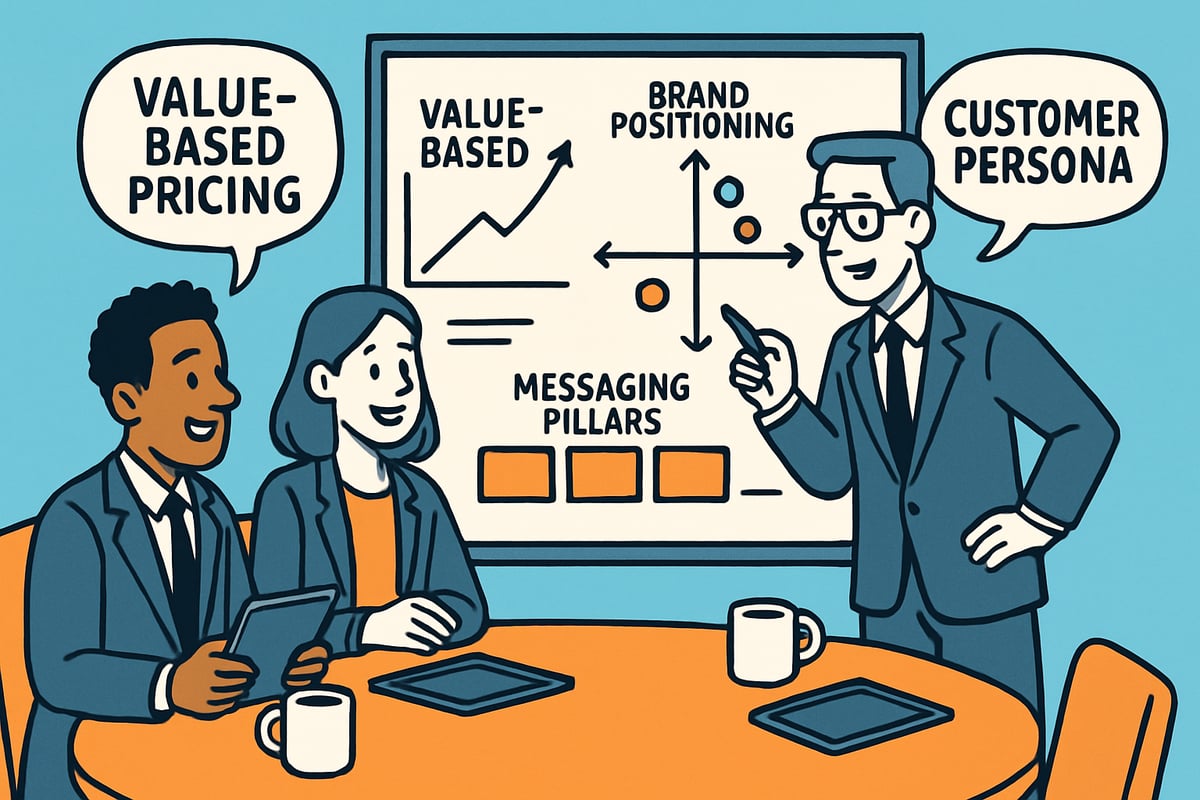
Competitive and Value-Based Pricing Strategies
Pricing is a critical lever within the go to market strategy mckinsey framework. Teams analyze competitive benchmarks, customer willingness to pay, and perceived product value to set optimal price points. McKinsey recommends value-based pricing, capturing the maximum a buyer is prepared to invest for unique benefits.
This method ensures prices reflect both the product’s worth and market realities. Companies often set price floors based on costs and ceilings based on differentiated value. For a deeper dive into how value-based pricing integrates with innovation and market penetration, explore McKinsey's Seven Growth Directions.
Product and Brand Positioning for Market Impact
Effective positioning is at the heart of any go to market strategy mckinsey. The goal is to define your product as the definitive solution for a targeted customer need. McKinsey advocates for building a brand narrative that highlights both functional value and emotional resonance.
This involves mapping competitive advantages, crafting a clear promise, and validating claims with customer testimonials or case studies. A strong positioning effort ensures your brand stands out in a crowded market, driving preference and loyalty.
Messaging Frameworks and Communication Tactics
Messaging is how your strategy comes alive in the market. The go to market strategy mckinsey approach builds messaging pillars that speak directly to customer pain points and aspirations. Each segment receives tailored communication, ensuring relevance at every touchpoint.
Teams leverage omnichannel campaigns, using digital, social, and direct channels for consistent delivery. Content marketing plays a key role, driving education and trust. For organizations tackling complex enterprise sales, the Enterprise Sales-Led Growth Guide offers practical frameworks to align sales and marketing communications.
GTM Consult: B2B SaaS GTM Advisory
GTM Consult helps B2B SaaS leaders operationalize a go to market strategy mckinsey with proven results. Their services span market positioning, sales enablement, and cross-functional alignment. With flexible engagement models, GTM Consult has delivered pipeline contributions of 60% and lead generation growth of 300% for clients.
Whether you are a founder or CMO, partnering with experts accelerates your GTM execution. Their data-driven approach ensures your strategy is scalable and resilient.
Metrics, Measurement, and Continuous Improvement
Measuring success is at the core of any effective go to market strategy mckinsey recommends. Sustainable growth depends on translating data into actionable insights. By systematically tracking the right metrics, companies gain clarity on performance, identify bottlenecks, and drive continuous improvement. The following pillars will guide your measurement and iteration process for GTM excellence.
Key Metrics for GTM Success
Selecting the right metrics is foundational to a strong go to market strategy mckinsey approach. Core GTM metrics include:
A clear dashboard enables real-time monitoring of these KPIs. Companies with well-defined metrics outperform peers in GTM execution. Regularly reviewing these metrics highlights trends and opportunities for refinement. This systematic approach ensures your GTM efforts remain aligned with business objectives and market demands.
Feedback Loops and Agile Iteration
Continuous feedback is essential for refining your go to market strategy mckinsey framework. Collect insights from both customers and sales teams after each product launch or campaign. Use rapid iteration cycles to apply learnings quickly and stay ahead of shifting market needs.
Key feedback mechanisms include:
A/B testing messaging and channels helps optimize performance. McKinsey’s agile feedback process champions frequent adjustments, ensuring your GTM remains relevant and effective. Fast iteration bridges the gap between strategy and market reality.
Regular Reviews and Strategy Adjustments
Routine strategy reviews are a hallmark of go to market strategy mckinsey best practices. Schedule quarterly GTM reviews with cross-functional teams. Analyze performance against OKRs and KPIs, then recalibrate tactics based on current market and competitor movements.
A typical review process includes:
Data shows that companies conducting regular GTM reviews respond faster to change and capitalize on new opportunities, strengthening their market position over time.
Avoiding Common Pitfalls and Ensuring Alignment
Avoiding missteps is critical in any go to market strategy mckinsey model. Watch for signs of misalignment between teams, strategy drift, or gaps in customer understanding. Address shortfalls in research and ensure leadership remains invested in GTM initiatives.
Key actions to prevent pitfalls:
For historical context on how McKinsey’s early GTM strategies prioritized robust budgeting and alignment, explore McKinsey's Early Go-to-Market Strategy. Companies with strong alignment and proactive adjustments consistently achieve higher launch success rates and long-term growth.
As you reflect on these McKinsey-inspired strategies and consider how they might apply to your own GTM planning for 2025, remember that turning insight into action is where real growth begins. At GTM Consult, we help founders, CMOs, and CROs bridge the gap between strategy and scalable revenue with frameworks that align product, marketing, and sales—all tied directly to the metrics that matter. If you’re ready to put these principles into practice and unlock repeatable, enterprise-grade growth, let’s connect to discuss your goals and challenges. Book a free meeting

Latest From
The Blog
Go To Market Strategy Consulting Guide For 2025 Success

Crossing the Enterprise Chasm: A Practical Guide to Sales-Led Growth (SLG)

Why Most Go-To-Market Strategies Fail – And How to Get Yours Right from Day One


Let's Build The Future Together



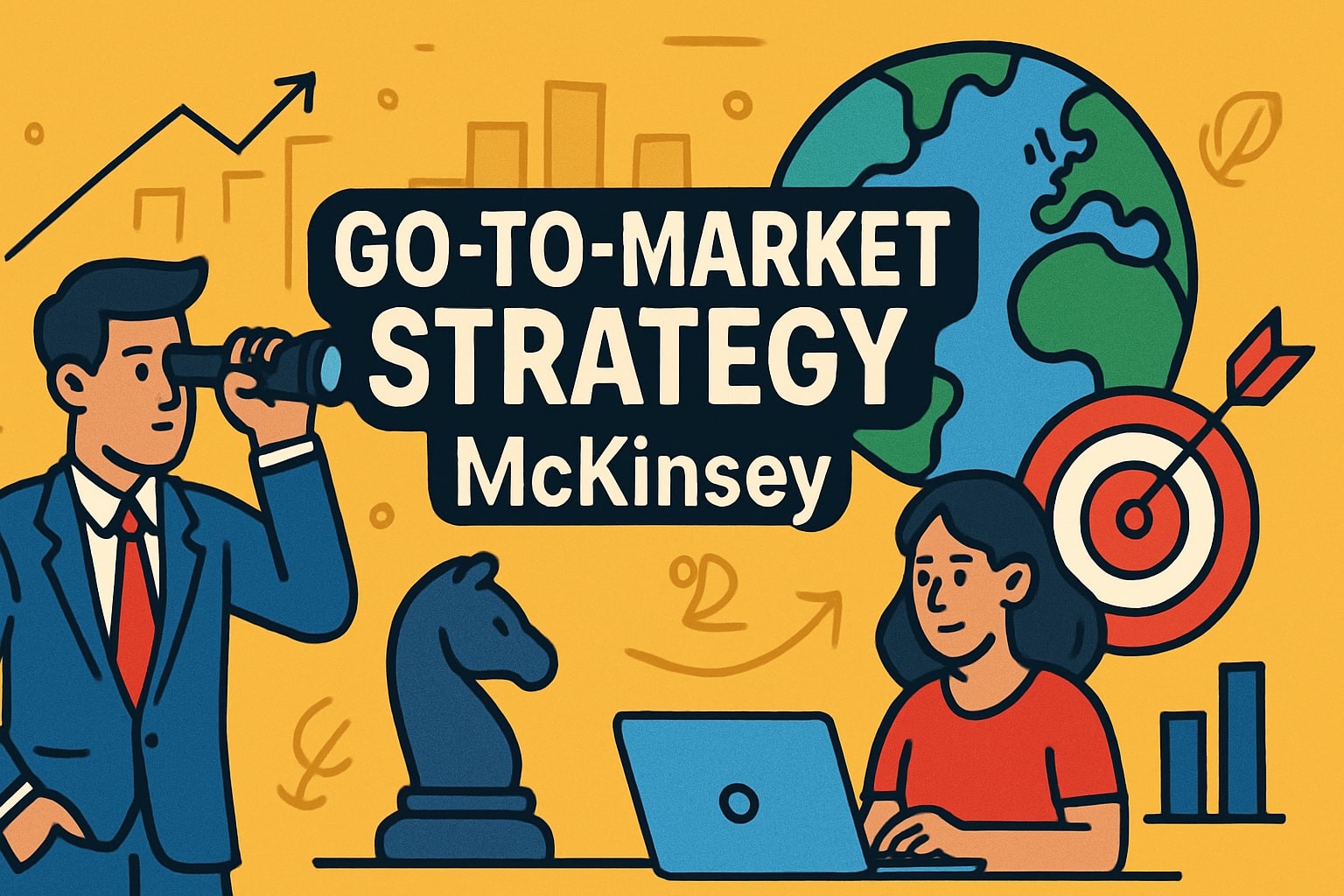
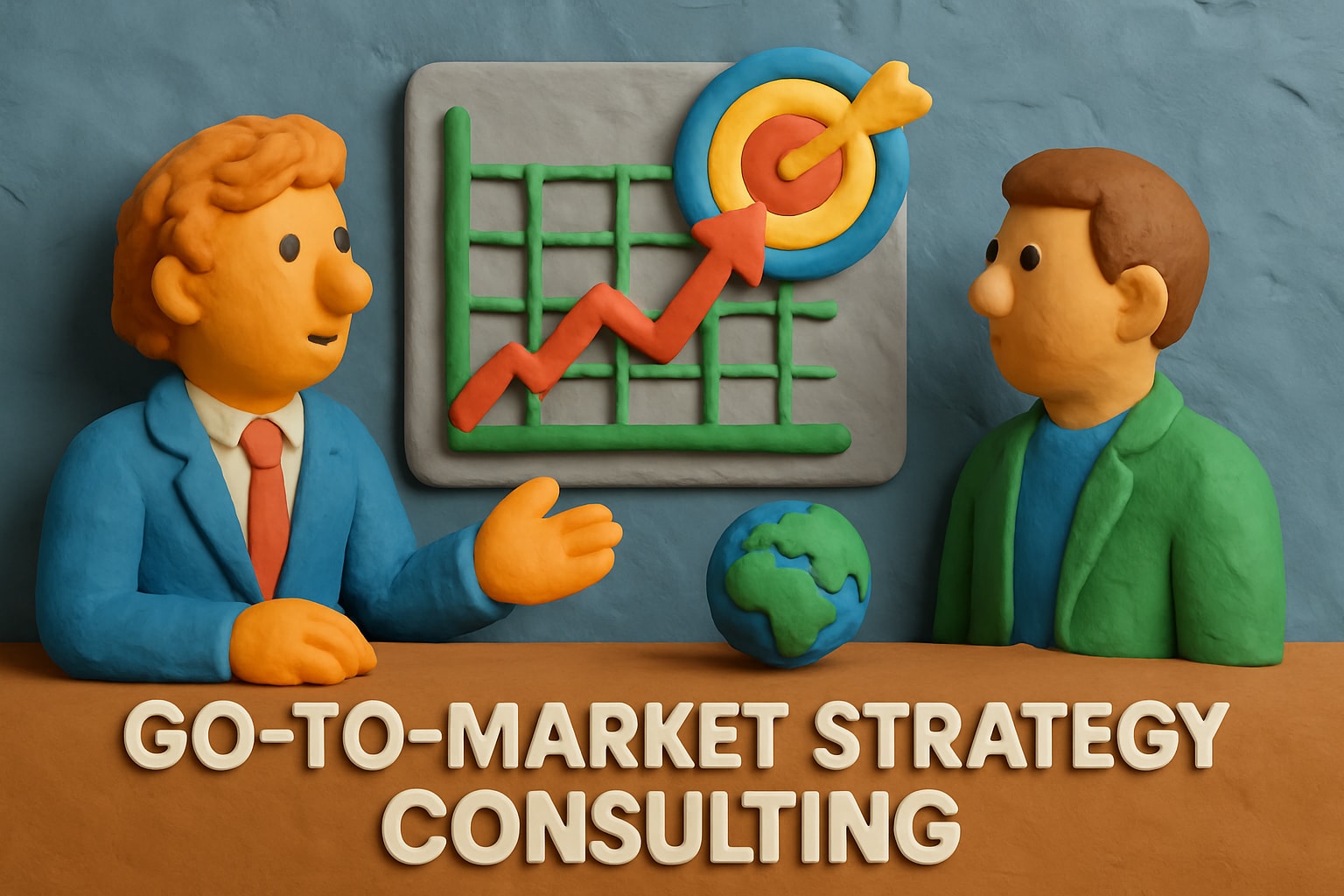
.jpg)
